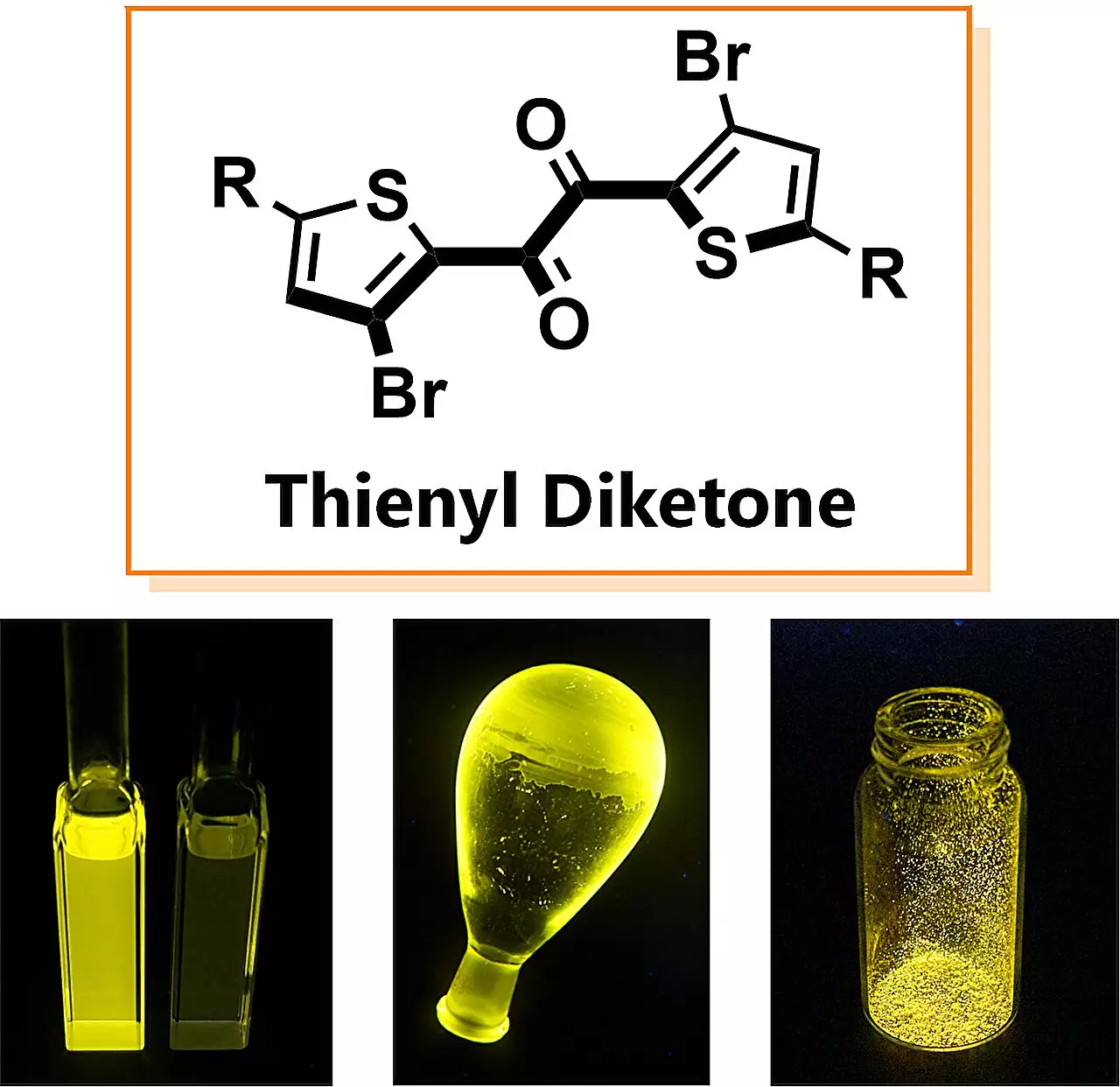In a remarkable turn of scientific innovation, researchers at Osaka University have unveiled thienyl diketone, an organic molecule that has shattered long-standing records in phosphorescent efficiency. This cutting-edge discovery, enabled through meticulous experimentation, reveals a phosphorescent speed over ten times greater than that of traditional materials. Such advancements hold vast implications for various industries, from organic electroluminescent displays (OLEDs) to critical applications in cancer diagnostics.
Phosphorescence, a process pivotal in modern optical technologies, sees molecules transitioning between energy states, emitting light in the process. Historically, achieving efficiency in this phenomenon without the use of rare metals—such as iridium or platinum—has been a formidable challenge. This milestone is particularly significant, as the reliance on these rare materials not only constrains resource availability but also drives up costs and environmental concerns.
A New Mechanism Behind Phosphorescent Efficiency
The research team delved deep into the mechanics of phosphorescence, seeking to understand the competitive processes that diminish energy efficiency. In many molecules, non-radiative pathways can lead to energy loss as heat, undermining the phosphorescent yield. However, the thienyl diketone molecule exhibits remarkable properties that mitigate these inefficiencies. As Dr. Yosuke Tani, the senior author of the study, pointed out, the discovery was somewhat serendipitous—initial observations did not clearly reveal the superior qualities of thienyl diketone, but further research illuminated the cryptic mechanisms at play.
This discovery not only opens doors to faster phosphorescent processes but also provides a coherent framework for designing future organic phosphorescent materials. With this newfound understanding, relevant industries could see a significant transition from rare-metal composites to more sustainable, efficient organic alternatives.
Implications for Future Applications
The potential applications of thienyl diketone are extensive and transformative. In the realm of OLED technology, for instance, this molecule could dramatically enhance display capabilities by providing brighter, longer-lasting visuals, thereby attracting the interest of electronics manufacturers. In medical diagnostics, phosphorescent biomarkers could see improved accuracy and speed, leading to enhanced diagnostic procedures.
Dr. Tani’s reflections on the implications of this research indicate an inspiring trajectory: “Our research lays the foundation for future explorations in this domain, and the excitement surrounding thienyl diketone is palpable.” The team recognizes that although they have unraveled a great deal regarding the molecule’s efficiency, the full spectrum of its capabilities is yet to be discovered.
The Significance of Sustainable Research
This breakthrough embodies a shift towards sustainable chemistry, wherein researchers are encouraged to step away from precious metal systems traditionally used for phosphorescence. By emphasizing organic materials, the scientific community can foster innovation that aligns with ecological considerations and economic pragmatism. The implications resonate well beyond immediate applications; they signal a broader movement within materials science to seek alternatives that prioritize sustainability without compromising performance.
As we stand at the forefront of what could become a groundbreaking era in phosphorescent technology, the thienyl diketone discovery exemplifies how curiosity-driven research can yield unforeseen rewards, laying the groundwork for future innovations that could dramatically alter our technological landscape.


Leave a Reply